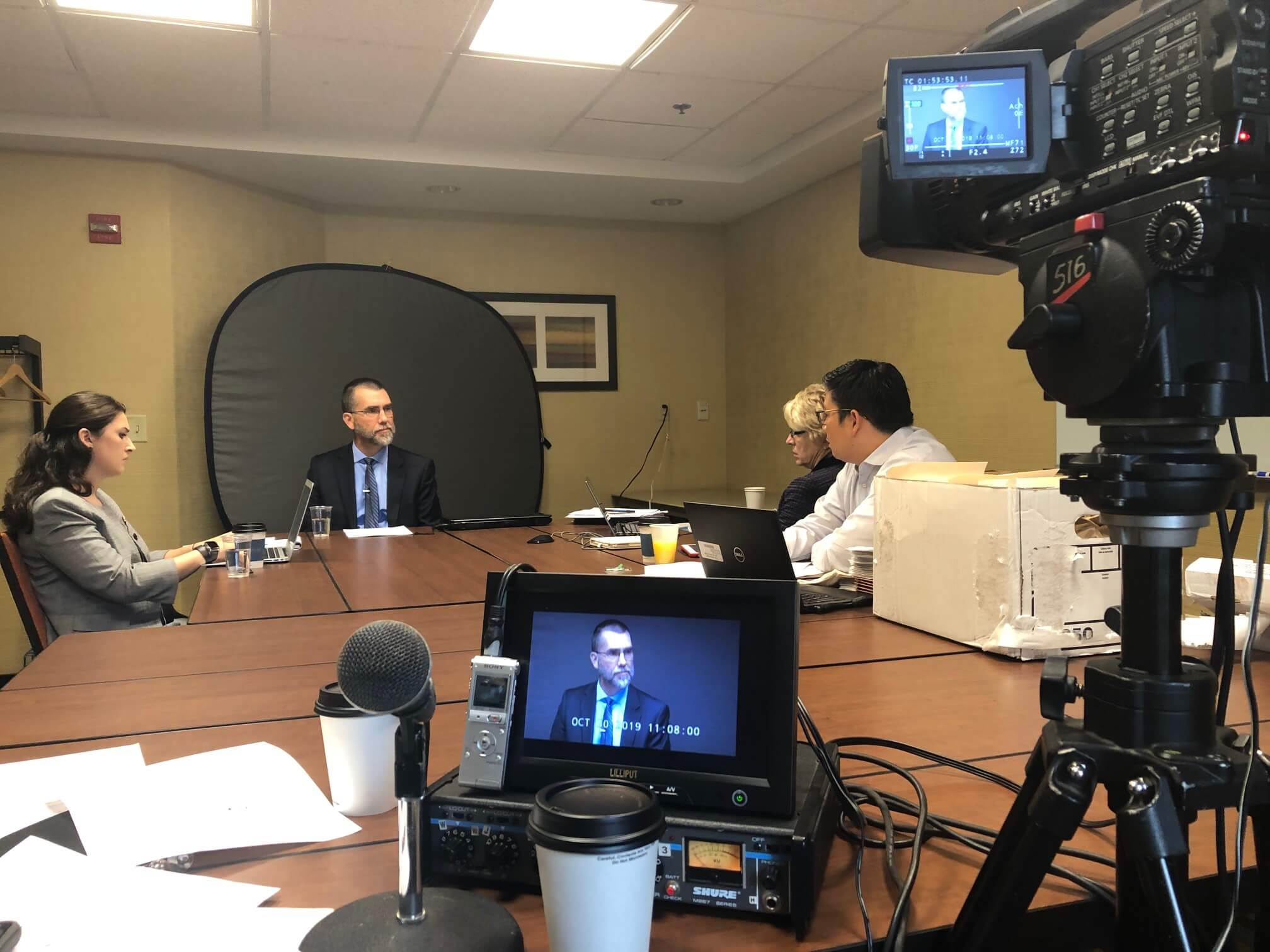Leading Benefits of Professional Legal Videography for Lawsuit
Leading Benefits of Professional Legal Videography for Lawsuit
Blog Article
Looking Into the Systems of Lawful Videography: Unveiling Its Operation in Safeguarding Genuine Visual Testament for Judicial Procedures
In the realm of judicial proceedings, the function of legal videography stands as a keystone in preserving and presenting aesthetic evidence. As innovation remains to breakthrough, the mechanisms behind legal videography have actually become increasingly elaborate, providing a vital layer of authenticity to statements recorded on video clip. By diving right into the functional intricacies of legal videography, one can uncover the careful processes that safeguard the integrity of aesthetic proof provided in courts - Legal Videography. This expedition not just drops light on the historic advancement of legal videography however likewise hints at the future patterns that might better change just how aesthetic testimonies are maintained in the world of justice.
Historical Advancement of Legal Videography
Taking a look at the historical progression of lawful videography discloses a significant improvement in the catching and discussion of aesthetic proof within the lawful landscape. In the past, lawful process heavily counted on composed transcripts and pictures to document occasions and offer proof. With the advent of video clip innovation, the lawful sector observed a paradigm shift in just how aesthetic testament was caught and presented.
The evolution of lawful videography can be traced back to the late 20th century when advancements in video recording devices made it much more accessible for usage in courts. This technological development not just enhanced the accuracy and reliability of aesthetic evidence yet also revolutionized the way situations existed to courts and judges (Legal Videography). Attorneys began to recognize the convincing power of video recordings in sharing emotions, nuances, and non-verbal cues that written photos or records alone could not capture successfully

Technology Innovations in Video Clip Documentation
What crucial technological advancements have changed video clip documentation in the lawful area? The lawful area has seen significant innovations in video clip documents technology that have enhanced the authenticity and integrity of visual evidence in judicial process. One of the vital innovations is high-definition (HD) video clip recording capacities, which give crystal-clear photos and sharp information that are important for accurately capturing testimonies, face expressions, and various other aesthetic hints. Additionally, the integration of timestamping and metadata attributes in video clip documentation tools has enabled precise documentation of when and where the video was taped, guaranteeing the stability of the proof presented in court.
Furthermore, improvements in video encryption and watermarking innovations have actually bolstered the security and tamper-proof nature of video evidence, guarding it against unapproved changes or meddling. Furthermore, the development of cloud storage space remedies and remote gain access to capacities has streamlined the storage, retrieval, and sharing of video evidence, assisting in seamless collaboration among lawful professionals and guaranteeing effective accessibility to crucial aesthetic testimonies when required. These technical advancements in video documentation have certainly transformed the legal field, boosting the precision, reliability, and admissibility of aesthetic proof in judicial process.
Duty of Lawful Videographers in Court Room Setups
The evolution of video click now documentation innovation in the legal area has actually demanded an important function for legal videographers in court room settings, ensuring the honesty and reliability of aesthetic statements presented throughout judicial process. Legal videographers play a fundamental duty in recording and protecting exact visual proof that can be critical in litigation. Their obligation encompasses establishing devices, taping proceedings, and creating high-quality video clips that accurately show the occasions in the court.
In courtroom setups, lawful videographers need to follow rigorous standards and requirements to maintain the credibility of the aesthetic record. They have to have a keen eye for detail and an extensive understanding of lawful procedures to make sure that the video they record is a real representation of the events that took place. Additionally, lawful videographers commonly work very closely with legal teams to make certain that the video evidence aligns with the instance's needs and can be effectively offered in court to support the legal disagreements being made. Generally, the role of legal videographers in courtroom settings is indispensable in maintaining the principles of justice and guaranteeing the transparency of legal proceedings.

Ensuring Admissibility and Stability of Video Clip Evidence
To maintain the credibility of aesthetic proof offered in legal process, guaranteeing the admissibility and honesty of video evidence is an important obligation for legal videographers. Admissibility refers to the acceptance of proof by the court, and for video clip proof to be permissible, it should fulfill particular standards. Lawful videographers play a critical useful link function in guaranteeing that the video clips they catch follow the rules of evidence, such as dependability, authenticity, and significance.
Stability of video evidence involves keeping the creativity and precision of the footage from the time it is taped until it is provided in court. This includes firmly keeping the video clip files, documenting the chain of wardship, and preventing any meddling or alterations. Legal videographers need to comply with stringent protocols to guarantee the stability of the video evidence and avoid any kind of challenges to its credibility.
Future Trends in Legal Videography
Given the increasing reliance on modern technology in lawful procedures, legal videographers are poised to welcome ingenious innovations forming the future of visual testament capture and presentation. Among the noticeable trends on the horizon is the assimilation of virtual truth (VR) and boosted reality (AR) innovations into lawful videography. These technologies have the possible to change how aesthetic evidence is provided in court rooms, allowing judges and juries to immerse themselves in the scene of the criminal activity or occurrence.
Moreover, making use of man-made intelligence (AI) algorithms for video evaluation is expected to improve the process of assessing and assessing big amounts of video clip footage. AI can help in recognizing crucial moments, anomalies, and patterns within videos, improving the effectiveness of legal examinations.

Conclusion
Finally, lawful videography has actually played a crucial function in supplying authentic aesthetic proof for judicial proceedings. Via technological improvements and the experience of legal videographers, the honesty and admissibility of video proof are made sure in court room settings. As legal videography proceeds to develop, it will be necessary to copyright standards that keep the precision and integrity of visual testimony for the future of lawful proceedings.
Taking a look at the historical progression of legal videography discloses a considerable change in the catching and discussion of visual evidence within the lawful landscape.The advancement of video documentation innovation in the legal area has necessitated a vital function for legal videographers in court setups, making sure the honesty and dependability of aesthetic testaments provided throughout judicial process. Additionally, legal videographers often work very closely with lawful teams to make certain that the video clip evidence straightens with the situation's demands and can be effectively provided here are the findings in court to support the legal arguments being made.To keep the reliability of aesthetic proof presented in legal proceedings, making certain the admissibility and stability of video clip evidence is an essential responsibility for legal videographers. As legal videography proceeds to progress, it will certainly be vital to promote criteria that keep the accuracy and dependability of visual testament for the future of lawful process.
Report this page